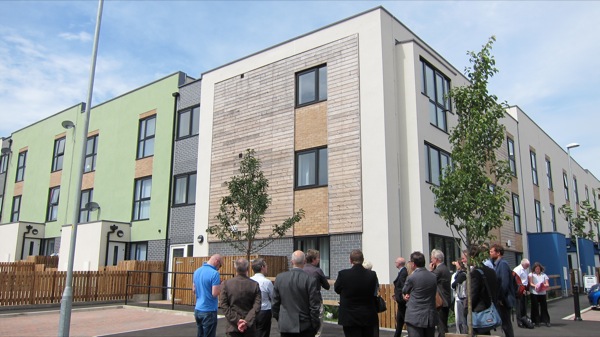Written by:
By Martin Valentine
Leading by example
When I decided to set up Positive Homes, it was with a rather lofty ambition– to revolutionise the house building business.
Why? Because from where I’d come from, all I saw was cynicism, mistrust, and just downright dishonesty: an unpleasant blame culture where build cheap/ sell high using clever marketing was the mantra.
And a big part of that mantra involves what is basically theft: A systematic attempt to cheat anything to do with the public realm – and future public services – of the investment they need to help improve our society.
Too strong? Perhaps. But if, as I have, you’ve worked in the public sector for almost all your adult life, then you’ll recognise the symptoms:
Council identifies X needed for local services and environment, greedy developer offers Y…. And Government sets the rules which require public services to miss out on investment so the builders can make their 20% (and let’s not get into the validity of how they make their profit calculations).
It’s that attitude which leads to the endless ‘you could be anywhere’ identikit estates filling up green fields on the edges of towns and villages up and down the country. Is this really the best we can do?
Thankfully, no. And the alternative is actually more profitable, not less.
What councils lack these days is the confidence to make the best use of the powers they have. That has to change.
My last public sector job was at North West Leicestershire District Council. It’s a fascinating place of posh villages – and Ashby-de-la-Zouch – and ex-mining towns. The council sponsored Nottingham Trent University to create the Building for Life (BFL) framework. This visionary bit of work has been keenly adopted by councils all over the country – and is used by many parish councils and neighbourhood groups when they comment on applications.
BFL starts from a belief that quality design and a bit of thought and care makes for better homes and communities – which feeds into higher sale prices. It’s a simple system that starts from the right place.
Meanwhile you’ve got some talented and dedicated people in local authorities trying to work with developers to plan better communities. (I have a lot of sympathy for urban design officers – I know one who cannot bring himself to go to one 10 year old estate because the end result is just so oppressively offensive in character!)
We do a lot of work in Chesterfield. The council there has a ‘1% for art’ scheme. Their planning boss told me the arc goes something like this: Developer moans about having to pay it, feels forced into doing it, buyers comment on how nice the art piece makes the new community, developer goes back to council and says ‘that turned out really well, we won’t complain so much next time’.
There are more than 50 pieces dotted about the town now. It’s a brilliant and simple idea – but it starts from the polar opposite of the attitude of many house builders, who see anything like better paving/ planting/ fencing/ open space (and larger rooms… and better energy efficiency) as meaning less profit.
So we aim to lead by example. I don’t expect the big players to sit up and take notice – but if enough of us can agree a better way, and stick to it, then everybody wins.
Who’s with me?
***********************
Martin Valentine is the Managing Director of Positive Homes, whose ambition it is to build homes that generate more energy than they require over a yearly cycle.
Place: a shared responsibility? The Glass-House Nottingham Debate takes place on Wednesday 3 February 2016 6-7.30pm.

